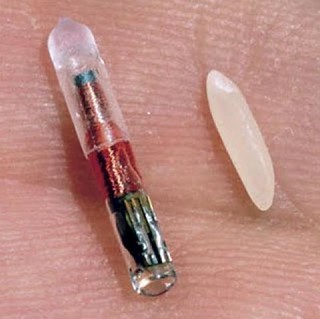Artificial Gravity? Ask the Big Dog

As scientists the world over ponder the problems that must be surmounted so mankind can thrive in outer space, the debilitating effects of weightlessness is high up on the list of priorities. However, I submit that if they want to find the secret to generating a field of artificial gravity, they need look no farther than the nearest large dog. It never ceases to amaze me how a 90 pound Bulldog can suddenly increase his or her weight to around 200 pounds at the mere sight of a bath tub.
If scientists can figure out how a dog can increase their gravitational attraction at will, they should have the secret to creating artificial gravity in spaceships.
CARING FOR OTHERS
 The most compelling task of our Christian commitment is that we do unto others as we would have them do unto us. In no way can we escape the Biblical mandate to treat others with respect. We are not offered the option of retaliation, even when we are mistreated. We are admonished to turn the other cheek and go the second mile. In so doing, we leave the impression that love and not hate is the dominant force in our lives.
The most compelling task of our Christian commitment is that we do unto others as we would have them do unto us. In no way can we escape the Biblical mandate to treat others with respect. We are not offered the option of retaliation, even when we are mistreated. We are admonished to turn the other cheek and go the second mile. In so doing, we leave the impression that love and not hate is the dominant force in our lives.Life in the Mountains: Wildfires
Originally published Nov. 7, 2013 by Grit Magazine
It’s raining here today. That’s a very good thing. Not only do we need the moisture, but it does wonders for the air quality in our neighborhood right now.
 A wildfire started early yesterday on Stone Mountain: just over a mile from where I sit. The smoke in the air was noticeable here by mid-morning and got steadily worse. By early afternoon an easterly wind moved in and blew the smoke the other side of Piney Mountain down through Bat Harbor. When the wind died down yesterday evening, the smoke moved back in, in force. It was nasty.
A wildfire started early yesterday on Stone Mountain: just over a mile from where I sit. The smoke in the air was noticeable here by mid-morning and got steadily worse. By early afternoon an easterly wind moved in and blew the smoke the other side of Piney Mountain down through Bat Harbor. When the wind died down yesterday evening, the smoke moved back in, in force. It was nasty.
The photo is a shot of the fire taken Wednesday at dusk from the Lowe’s parking lot in Newport – probably about 8 miles away as the crow flies. Unless it’s a drunken crow; then that would be hard to judge. It shows the smoke plume that is drifting along Piney Mountain: our home place.
We sealed our house windows yesterday to keep the smoke out. The gentle drizzly rain started around 4 a.m. and has dropped 4/10th inch so far – at 8 a.m. – which has done wonders toward dragging the smoke particles out of the air and making it far more breathable. It should help some in the firefighting efforts as well.
 We are in no danger from this fire except for the annoyance of the smoke. The biggest danger presented – other than to a few homes in that area – is to a spot at the crest of Stone Mountain called Hall’s Top, which is the location of a major communications antenna array. If this gets taken out by the fire, it would put a major crimp in wireless communications – cell phones, internet, business and emergency vehicle radios, etc. – in this county.
We are in no danger from this fire except for the annoyance of the smoke. The biggest danger presented – other than to a few homes in that area – is to a spot at the crest of Stone Mountain called Hall’s Top, which is the location of a major communications antenna array. If this gets taken out by the fire, it would put a major crimp in wireless communications – cell phones, internet, business and emergency vehicle radios, etc. – in this county.
In the photo at the top of the page Hall’s Top is the high point just to the right of the fire. Since the winds are blowing the fire away from Hall’s Top, I expect it too will be OK.
Stone Mountain sits at 90 degrees just off the southern end of Piney Mountain. They are separated by a creek and a paved roadway. Just to the east of Stone Mountain is Hogback Mountain: it burned last year. Just north and east of Piney Mountain is Rocky Top (yes: THAT Rocky Top), which burned a few years ago. In between those times was a fire along the Foothills Parkway, which is more distant but visible from our front porch.
Wildfires are always a concern here because battling fires on the steep, heavily wooded, often unimproved (meaning few, if any, roads) faces of these mountains is a difficult task even for the experienced personnel of the Forestry Department. It is not at all like battling a fire in a city or even in a rural area of the flat-lands. Equipment cannot be driven in, the only water available would be any streams or creeks (often too small to be of any real use), and there is no quick way to get injured men out of a fire area. Even bringing in a bulldozer to create a fire break can be hazardous because of the danger of rolling it over on the steep, soft terrain. So most mountain firefighting is done on foot with chainsaws and shovels by men and women who must climb through the undergrowth up the steep slopes to the fire from the nearest road or pathway.
As residents of (or visitors to) these mountains, we need to be very careful with open fires, especially in the fall when the leaves are dry and highly flammable. Being caught in the middle of a wildfire will ruin your whole day.
These Guys Are Really Bugging Me!
At first it was lady bugs – or more properly, Lady Bird Beetles. Not the American Ladybugs: they are beneficial in the garden and non-invasive: we loved them. But the Asian Ladybugs imported by the forestry department to control their Hemlock Borer infestation became a real nuisance. They forced out the American Ladybugs and preferred to over-winter in our home with us. The American Ladybugs were never so rude as to move in en masse uninvited.
This year there has been a distinct lack of Ladybugs of any nation. Japanese Beetles were bad and I put out traps in an effort to control them, but they still decimated my bean plants.
 As fall set in and we braced for the Ladybug war, they have not appeared. But an even more heinous cousin did; the Stink Bug. There are thousands of them in our yard, hundreds crawling on our home; including our porch, and dozens of the odiferous insects in our home.
As fall set in and we braced for the Ladybug war, they have not appeared. But an even more heinous cousin did; the Stink Bug. There are thousands of them in our yard, hundreds crawling on our home; including our porch, and dozens of the odiferous insects in our home.
Where Did These Bugs Come From?
It seems these nasty fellows hitched a ride here from Asia (where else), probably in some packing crates. They were first collected in September 1998 in Allentown, Pennsylvania.
Since then these pests have spread north into Maine and south into Florida, and are now moving west across the entire country. In the past, there have been one generation annually, but recent mild winters and warm springs enable additional generations to reproduce, increasing the population everywhere.
TIME-WISE
 Time is a fascinating feature of our human existence. It is the stuff life is made of. We may lose some important items of life, but time is the most precious thing we could ever squander. We may be rich in worldly goods, but poor indeed if we have not time. Time is the context in which God created all things and allows history to record the events of His created order. We do well to redeem our time.
Time is a fascinating feature of our human existence. It is the stuff life is made of. We may lose some important items of life, but time is the most precious thing we could ever squander. We may be rich in worldly goods, but poor indeed if we have not time. Time is the context in which God created all things and allows history to record the events of His created order. We do well to redeem our time.The Emotion of Words

Words carry a lot of meaning. I don’t mean that in the sense of synonyms and homonyms, but in the sense that the way we construct our sentences and phrases can carry – or not – far more meaning than the words alone should. It’s sometimes called “word pictures”
If you want to paint a mental picture of a girl who is sickly and frail, you would do well to stay away from the words “light” or “fair” in describing her skin and use “pale” or “ashen”. A dog that is scrawny will likely be viewed as unhealthy, while “slender” or “thin” may be viewed as fit and toned. If moving a bag or package, “hoisted”, “heaved” or “hefted” brings to mind a good deal of weight while “tossed” or “flipped” indicates a light load and easy task. A good thesaurus will help you find alternate words and a dictionary will help make sure you’re using them correctly. But it goes beyond this.
Scrambling Time
Today I was scrambling. I’m not talking about eggs either – although I did scramble up some eggs and fried some turkey bacon for breakfast this morning. The scrambling I’m referring to is the dashing-frantically-around-to-get-something-done sort of scrambling.
It rarely gets cold-cold here in Tennessee before December. If we get snow at all it’s in February. On the rare occasion we’ll get a snowfall around Christmas, but that’s very rare. On that basis I was not in a big hurry to get my garden boxes covered in plastic for protection from winter weather, since winter weather was months away yet. Except it’s not.
The weather guessers have been saying that we can expect overnight low temperatures around 29 degrees over the next couple of days. That’s cold enough to do some serious damage to my squash. Rain is expected as well – although it’s not clear if the rain will be first then cold or the other way around. They’re not talking about snow, so I suspect it will be cold overnight and rain during the day after it warms. If that’s the case, my lettuce and Brussels sprouts should be OK, they just need protection from the cold winds.
A couple of weeks ago I bought my annual roll of 6 mil semi-transparent plastic which I use to cover the boxes. It’s been sitting here, ready to go to work ever since. That 29-degree forecast is for tonight/tomorrow morning, so today is the last day I have to get this done.
My garden is done all in raised beds, because we live on the side of a mountain and this is the only way I can garden that doesn’t just wash away every time it rains. I have fence boxes made from PVC pipe and poultry mesh to keep the rabbits out of my crops. In the winter I can add the plastic sheeting to provide better protection from the elements. How much protection is needed depends on what is inside.
The Next Big Thing in Microchips

There has been a considerable amount of talk, speculation and fear-mongering going on about the next big leap in personal information and records keeping, namely: microchipping.
Recently I’ve read articles, watched clips of talk shows and seen many YouTube videos on the subject of placing microchips in people. Some say it’s a great idea, some have concerns over privacy, and some are yelling “Mark of the Beast” and quoting scripture.[1]
Microchips in Pets
As a pet owner I have been, and continue to be, a proponent of having pets chipped: this vastly improves the chances or your pet being returned to you if they somehow get away from you and lose their collar or tags.
These chips store a 12 to 16 character alpha-numeric code. That’s all. When a scanner triggers the microchip, it transmits its code and the signal can be read for a distance of up to 10 centimeters (about 4 inches). The veterinarian or animal shelter then uses the code shown on the scanner to query a database[2] over the internet which returns the name, address and phone number of the animal’s registered owner. But why chip people?
THE JAILHOUSE OF JEALOUSY
 Jealousy is a terrible curse on the human personality. It has a devastating effect upon our self opinions. Jealousy arises out of a deep dissatisfaction with who we are and what we have. It keeps us searching endlessly for that which we think can make us complete. When we see what we think we want and someone else has it, we resent the fact that somehow life has denied us and favored another. It is a terrible way to live because we never know the joy of contentment.
Jealousy is a terrible curse on the human personality. It has a devastating effect upon our self opinions. Jealousy arises out of a deep dissatisfaction with who we are and what we have. It keeps us searching endlessly for that which we think can make us complete. When we see what we think we want and someone else has it, we resent the fact that somehow life has denied us and favored another. It is a terrible way to live because we never know the joy of contentment.